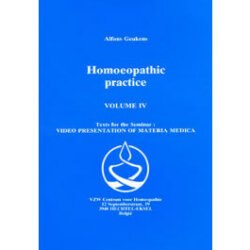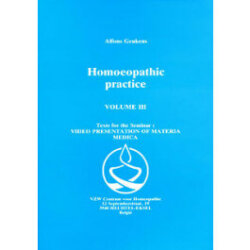Synoptic Reference I: The First 500 Remedies by Frans Vermeulen
Synoptic Reference: The First 500 Remedies provides a concise but thorough overview of remedies, assisting overwhelmed students in their studies and busy clinicians in retaining essentials. 274 plants, 132 minerals, 64 animals, 18 nosodes, 10 fungi and 2 imponderables are covered in this very impressive volume.
Vermeulen’s remedy pictures are a balance between verified original texts and clinical experience up to the present time. Informed by traditional lore and scientific understanding about a remedy’s source, Vermeulen’s descriptions clarify and affirm the connection between the material world and a remedy’s dynamic properties and homeopathic indications.
In the introduction, Vermeulen provides a number of examples of how these connections are seen throughout the plant, mineral and animal kingdoms, providing a more holistic understanding of remedies. He cautions that this approach is not the same as “Doctrine of Signatures”, as the latter relies on single qualities to ascertain properties, whereas homeopathy looks to the totality of symptoms in both the person and substance. Awed but encouraged by the number of new homeopathic provings, Vermeulen points out how Sepia and Carbo animalis demonstrate the alternative – stagnation leads to decline!
This volume includes both well-known and well-used remedies, as well as newer, “smaller” and unknown remedies. Responding to the idea one could treat 80% of the population with polychrests, Vermeulen points out how this runs counter to a central tenet of practice, which is individualization. And as an aid to individualization, he describes substances in the larger context in which they reside—living organisms according to biological family, and elements according to their respective column in the periodic table—which is a great help in researching comparable remedies.
Synoptic Reference I structure of presentation begins with a description of each remedy’s source material and preparation. Vermeulen emphasizes the importance of insuring the accuracy of historical indications, and also clarifying (and when necessary correcting) the identities of remedies according to their most recent biological and chemical nomenclature. He ultimately works to corroborate and correlate remedy source information with proving symptoms and the application of the remedy in practice.
Remedy pictures are grounded in provings and clinical experience, and expanded through extensive empirical observations by modern practitioners. “Affinities” links remedy action with anatomy and physiology, and “Symptoms” includes the four categories of Mind, Generalities, Sensations and Locals. “SRP’s” have been taken from RadarOpus and Complete Repertory, and “Food and Fluid” has desires, aversions, aggravations and ameliorations from food and drink.
Vermeulen includes a new feature called the “Plus Group”, which at the end of each description acts as a succinct summary for clinical practice. Several distinct features defining the remedy are listed in a general order of importance, and when used in an additive way, help to increase the possibility of matching a remedy with core symptoms.
Vermeulen states in his introduction ‘the careful balance of tradition and flexibility gives us the advantages of our excellent past as well as our innovative future. My goal with Synoptic Reference is to encompass both’. Fortunately for the profession, his latest book is a great success in bridging past and present, and is a lively and highly accessible read for both students and practicing clinicians. Vermeulen also promises a second volume of another 500 remedies in the future. The high level of scholarship invested in this volume is evident throughout, and offers help for homeopaths at all levels of practice and experience. 5 stars!




